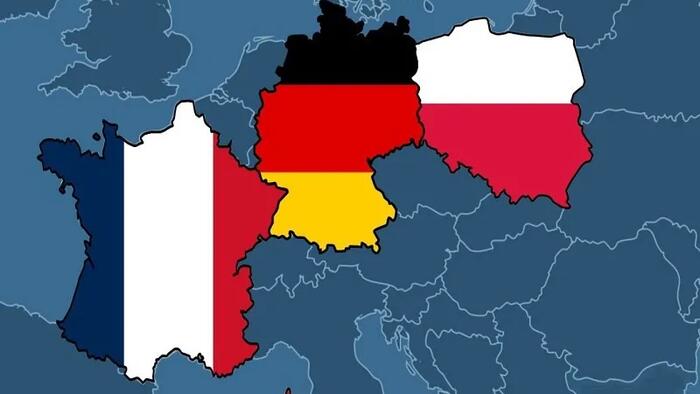


Authored by Andrew Korybko via substack,
French President Macron’s declaration on Wednesday that he’s flirting with extending his country’s nuclear umbrella over other continental allies shows that he’s throwing down the gauntlet to Germany and Poland for leadership of post-conflict Europe. Outgoing German Chancellor Scholz published an hegemonic manifesto in December 2022 that later took the form of what can be described as “Fortress Europe”, which refers to the German-led attempt to lead Europe’s containment of Russia.
This concept requires Poland subordinating itself to Germany, which unfolded over the first half of last year but then slowed as the ruling liberal-globalist coalition started taking a more populist-nationalist approach towards Ukraine ahead of May’s presidential election. Even if this started off insincerely, it’s since assumed a life of its own and created a new dynamic in the latest circumstances brought about by Trump’s return whereby “Poland Is Once Again Poised To Become The US’ Top Partner In Europe”.
Poland’s economy is the largest of the EU’s eastern members, it now boasts NATO’s third-largest army, and it’s consistently sought to be the US’ most reliable ally, the last point of which works most in its favor amidst the transatlantic rift. If these trends remain on track, Poland could prevent France or Germany from leading post-conflict Europe by carving out a US-backed sphere of influence in Central Europe, but it would have a shot at leadership in its own right if conservatives or populists come to power.
The sequence of events that would have to unfold begins with either of them winning the presidency, and this either pushing the liberal-globalists more in their direction ahead of fall 2027’s parliamentary elections or early elections being held on whatever pretext and then won by conservatives or populists. Poland’s former conservative government was very imperfect, but their country served as a bastion of EuroRealists (usually described by the Mainstream Media as Euroskeptics) during those eight years.
Should it reassume that role upon the return of conservative rule in parliament, perhaps in a coalition with populists, then this would perfectly align with Trump’s vision and could result in Poland either leading similar domestic political processes across the continent or at least in its own region. Even if only the second-mentioned scenario materializes, it would most effectively prevent liberal-globalist France or Germany from leading Europe as a whole by bifurcating it into ideologically competing halves.
France’s nuclear weapons are the ace up its sleeve though that it might play for keeping some conservative/populist-inclined societies under liberal-globalist sway by extending its umbrella over those countries which fear that Russia will invade but that they’ll then be abandoned by the US. That might help reshape some of their voters’ views if they come to feel dependent on France and thus decide to show fealty to it by keeping their ideologically aligned governments in power instead of change them.
This doesn’t mean that France will succeed, but what was explained above accounts for Macron’s unprecedented proposal in the context of his country’s Great Power ambitions at this historic moment. A lot in this regard will likely depend on the outcome of Romania’s domestic political crisis, which readers can learn more about here, since the liberal-globalist coup against the populist-nationalist frontrunner in May’s election redux could further entrench French influence in this geostrategic frontline state.
Few are aware, but France already has hundreds of troops there, where it leads a NATO battlegroup. It also signed a defense pact with neighboring Moldova in March 2024, which could hypothetically include the deployment of troops to there too. France’s military presence in Southeastern Europe places it in a prime position for conventionally intervening in Ukraine if it so chooses, whether before or after the end of hostilities, and suggests that Macron will focus on this region for expanding French influence.
Should progress be made, then three other scenarios would be possible.
Regardless of what ends up transpiring, the “military Schengen” that was pioneered between Germany, Poland, and the Netherlands last year and to which France expressed an intent to join will likely continue incorporating more EU members in order facilitate these three aspiring leaders’ interests. Germany needs this for its “Fortress Europe” plans, Poland needs its allies to swiftly come to its aid in a hypothetical war with Russia, while France needs this to entrench its influence in Southeastern Europe.
What’s ultimately being determined through the interplay of France, Germany, and Poland’s competing leadership plans for post-conflict Europe is the continent’s future security architecture, which will also be influenced to varying degrees by Russia and the US, be it jointly through their “New Détente” and/or independently. There are too many uncertainties at present to confidently predict what this emerging order will look like, but the dynamics described in this analysis account for the most likely scenarios.
